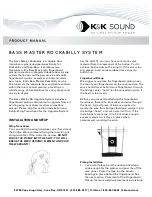
Cipia Vision Ltd.
–
Proprietary & Confidential
Page 21 of 38
2.
When the device is available, the server sends the command to the Cipia-FS10
device to enroll a new driver along with the features vector file, the permission
state, and the Global Driver ID.
The process described above is also the process used when the fleet manager wants to
update the permission status of a driver in a specific vehicle - they simply override the
existing record with a new data set for the same Global Driver ID. The Cipia-FS10 main
app checks if the Global Driver ID already exists in the driver DB, and if so, overrides it
with the new data set.
Audio Files Management
Cipia-FS10 triggers sound effects and voice messages.
There is a fixed NMV space allocation for a sound effects folder, independent of the voice
messages language defined by the user.
▪
There is a fixed NVM space allocation for 128 different folders of voice
messages, varying by language, dialect, voice gender or tone and indexed
between 0 (default) and 127.
▪
It is possible to modify/add a voice messages folder without the need to
upgrade the OS or the Main Application of the Cipia-FS10 device.
▪
It is possible to update or add voice folders via the OTA protocol or a USB
connection to a PC.
▪
The Cipia-FS10 app triggers the proper file according to the event type and
configuration file parameters (active language).
▪
The default set of sound effect and voice messages folders are loaded on
the production line.
▪
The voice messages packages are versioned, to allow for identifying the
default loaded packages (for production purposes only).
Device Reset
The Cipia-FS10 devices supports different system reset options including:
1.
HW reset initiated by pressing the main button.
2.
Self-reset triggered by the device watchdog mechanisms.
3.
OTA reset command which is defined as part of the device bi-directional
OTA protocol (secured and authenticated). Each reset event is assigned
with a different reason identifier, reported by the device to the backend
upon boot.
















































